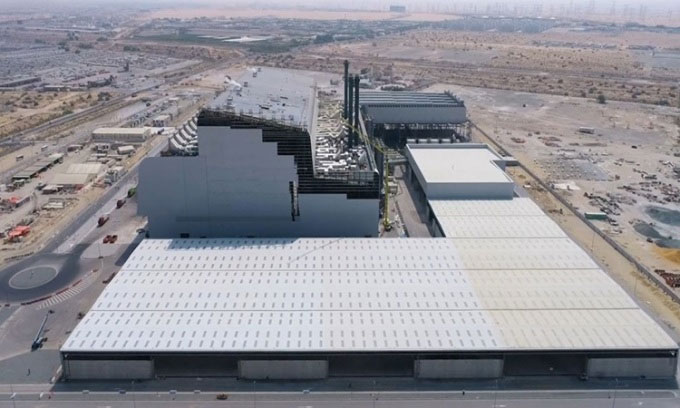The world's largest waste-to-electricity plant
Warsan's factory in Dubai will process 2 million tons of waste/year and meet the electricity needs of 135,000 households .
In Dubai, almost half of all discarded trash contributes to providing electricity to households. Most of the waste is collected at the factory operated by waste management company Warsan. According to Tim Clarke, the company's chief executive, about 45% of Dubai's total waste is delivered to this facility. Operating from March this year, the Warsan plant will use 2 million tons of waste annually to produce electricity, enough to supply about 135,000 households, CNN reported on May 17.

Warsan company's waste-to-electricity plant in Dubai. (Photo: Warsan).
This is a factory that turns waste into electricity . According to the United Nations Environment Program, about 13% of all municipal waste in the world is concentrated in such facilities. This waste treatment method is being widely applied in Europe and many other countries such as Japan, China and America. However, the difference of the factory in Dubai lies in its scale. Warsan is the world's largest waste-to-electricity plant . "We operate at about 34% electricity production efficiency, which is much higher than a conventional plant, partly because we can operate at higher temperatures and pressures ," Clarke said. .
The process of converting trash into electricity includes three steps : burning trash, using heat to create steam, and guiding the steam to run turbines to generate electricity. The process has been used for more than 100 years, but modern facilities better control pollutants released when trash is burned. Exhaust gas treatment allows the plant to filter toxic compounds and prevent them from being released into the air. Clarke explains they inject reagents into the furnace to filter out all harmful elements such as heavy metals and sulfur compounds and capture particles for disposal.
Not all contaminants can be filtered out. For example, the carbon dioxide that causes global warming is released into the air. However, because the plant produces electricity, replacing the burning of fossil fuels, the Warsan company believes that the overall results are quite positive. "We emit CO2 but produce 200 megawatts of electricity instead of using fossil fuels. So we help reduce about 1.5 billion tons of carbon dioxide emissions every year ," Clarke said.
Facilities like the factory in Dubai take extra steps to maximize resource extraction. For example, metals are segregated for recycling. Ash mountains after burning trash are collected and reused in road construction. According to Clarke, of the 5,500 tons of trash the plant receives every day, only 200 tons of residue cannot be reused after treatment.
The waste-to-electricity plant acts as a replacement for landfills (accounting for about 11% of global methane emissions). But some environmental organizations such as Zero Waste Europe say burning trash to produce electricity affects efforts to cut waste and incentives to increase recycling. Last year, the UAE recycled 20% of processed waste, but hopes to increase this to 90% by 2050.
- The first waste processing plant in Africa
- $ 140 million to build the largest waste treatment plant in Vietnam
- China built the world's largest garbage power plant
- 12 Largest hydroelectric plants in Vietnam
- Indian billionaire builds the world's largest clean power plant
- Utilize waste cooking oil to produce electricity
- Producing electricity from ... straw
- Put into operation the world's largest sea wind power plant
- The toilet is capable of generating electricity from waste
- Opening Australia's largest solar power plant
- China built the world's largest floating solar power plant
- Turn garbage into clean energy
 Norway built the world's tallest wooden tower
Norway built the world's tallest wooden tower Kremlin
Kremlin Ashurbanipal: The oldest royal library in the world
Ashurbanipal: The oldest royal library in the world Decoding the thousand-year construction of Qin Shihuang shocked the world
Decoding the thousand-year construction of Qin Shihuang shocked the world